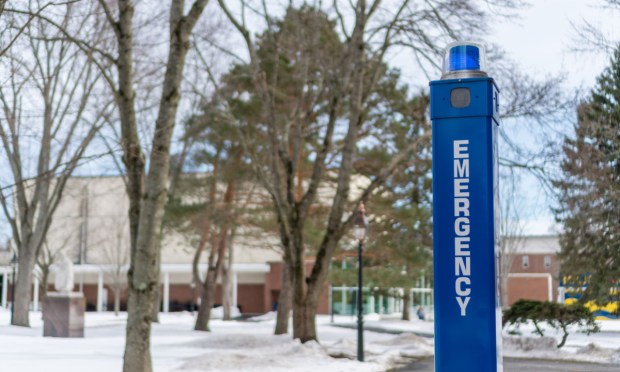Higher Ed Redefines Fraud Strategies for the Connected Campus

The integration of digital technologies, data networks and smart devices within the university ecosystem is transforming campuses into connected entities.
And amid this transformative shift there is a pressing need to bolster security measures as the dual threats of physical violence and cyberattacks continues to raise serious concerns for higher education institutions.
As outlined in “The Automated Campus: Enabling the Future of Higher Education,” a collaboration between PYMNTS Intelligence and American Express, two-thirds of decision-makers in higher education consider threats to both physical and network security to be key priorities for their institutions.
This apprehension is substantiated by recent trends. Per a CNN analysis, there has been a surge in incidents of physical violence on school grounds, with school shootings in 2021, 2022 and 2023 all setting records, marking a disturbing trend since at least 2008.
In response, institutions are investing in automation technology to enhance security on university campuses. This involves migrating network infrastructure to higher-security providers and adopting systems for improved student tracking. These measures enable institutions to alert individuals to potential physical danger in real time and respond more efficiently to emergencies.
For example, Central Michigan University (CMU) has taken proactive measures by implementing electronic access controls on campus as part of security upgrades. According to CMU Police Lt. Cameron Wassman, these additional tools, which allow the CMU Police Department to remotely secure exterior doors during emergencies, “further strengthen our aim of keeping campus secure and being prepared to respond to an emergency.”
Students, faculty and staff at CMU can utilize either their physical or mobile CentralCard to gain access into facilities, a system currently operational in 10 academic buildings, with expansion into four more buildings underway.
However, universities are not only contending with physical threats. The digitization of university operations and the rise in online learning have made institutions susceptible to cyber threats, exposing the vulnerability of digital infrastructure.
Last month, Memorial University, one of the largest universities in Atlantic Canada, fell victim to a cyberattack that encrypted data on some campus servers, disrupting user access and delaying classes by a week. Confirming the ransomware attack, Neil Bose, the university’s president, told CBC News that “the affected damage was [such that] no one could access anything, and none of the data was accessible to us.”
To counter these online attacks, universities are investing in secure network infrastructure and digital tools like virtual ID cards that safeguard sensitive data, prevent unauthorized access to online systems, and enhance the overall virtual campus experience.
Colleges and universities are also leveraging data to inform business decisions and enhance operational efficiencies, the PYMNTS Intelligence report found. Yet, the challenge lies in disconnected data, hindering universities from deriving value from this information. To address this, institutions are working on a unified data source across all systems and departments, alongside the implementation of centralized dashboards and mobile access to data insights.
The higher-education software market is projected to reach almost $170 billion by 2030. In this landscape, the adoption of digital solutions and data-driven insights will continue to play a pivotal role in safeguarding the integrity of connected campuses.
Whether implementing electronic access controls in response to physical threats or fortifying cybersecurity protocols to mitigate online risks, universities are poised to address the dual challenges of physical violence and cyberattacks to ensure campus safety.

